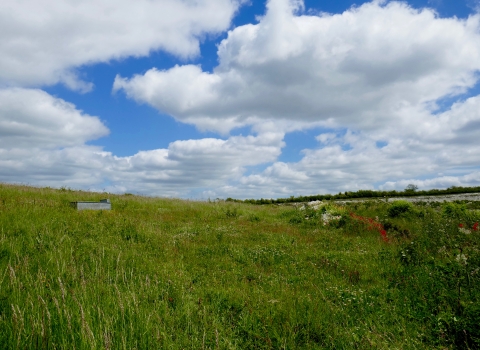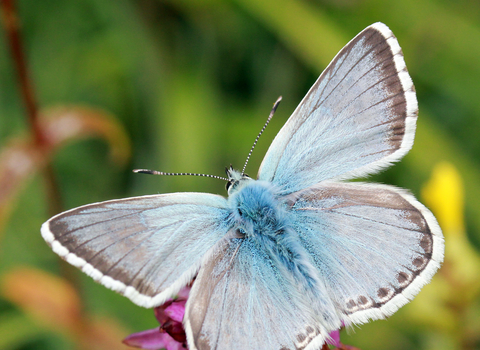Seeing butterflies on the wing is usually a sure-fire sign that warmer weather has arrived and for most of us, I hope they are a common sight on sunny days in spring and summer. In fact, one of my favourite things about butterflies is that they tend to completely avoid bad weather and are most commonly seen between the hours of about ten in the morning and four in the afternoon, making them the perfect study group for fieldwork!
Butterflies are relatively large insects - being colourful and airborne makes them easy to observe. They have captured human imagination for centuries and have a long history of being recorded, especially in the UK, however, as with so many insect species, numbers are declining. The most recent State of the UK’s Butterflies report, 2015, highlighted that more than three quarters of our resident and regular migrant species have suffered declines in abundance or distribution since the 1970s.
What’s worrying is that butterflies are useful indicator species and monitoring their numbers can warn of wider reaching negative changes taking place around them. Butterflies have a complex life cycle, with different life stages: starting out as an egg, before turning into a caterpillar, and later forming a chrysalis, undergoing metamorphosis into an adult butterfly. These distinct life stages often need different specific requirements to survive and as such butterflies can be very sensitive to even small changes in the environment. Therefore, if we look after our butterflies, we can catch potential problems early and look after a whole range of other species in the process.
In order to conserve butterflies and their associated communities, we need studies to investigate the consistency of their habitat and climatic preferences over multiple years - only then can management plans be put in place to successfully protect them in the long term. This will be particularly important as climates continue to warm, with concerns that species sensitive to environmental change will find the nature reserves currently supporting them to become unsuitable in the future. That is why our latest paper examined the requirements of an endangered butterfly, using data collected over a 14-year time frame.
The Duke of Burgundy butterfly has suffered one of the worst long-term declines of any butterfly species in the UK. Conservation efforts and global warming may have helped stall this downward trend in recent years, but more research is needed if declines are to continue reversing. In this paper we looked at the preferences exhibited by Duke of Burgundy butterflies when selecting foodplants for their caterpillars and investigated whether or not these preferences could be replicated by current management techniques, from data collected at the chalkland reserve at Totternhoe.
The Duke of Burgundy was found to be extremely consistent in its preferences over the course of the study, with large, sheltered groups of its foodplant, cowslips, being chosen year on year. Current management clearing scrub is doing a great job maintain high numbers of cowslips on site, but care needs to be taken to leave long enough between clearance for the plants to grow large enough amongst shelter and encourage the Dukes to lay eggs. These results highlight that specific management plans need to continue in order to support this selective butterfly.
Whether preferences remain the same, as with the Duke of Burgundy, or vary from year to year, maintaining suitable conditions will only get more difficult as climates continue to change. The continued conservation of endangered species will be made more feasible by increasing heterogeneity on reserves and management plans that promote habitat and topographic variability are set to become increasingly important.
Matt Hayes is a research assistant at the University Museum of Zoology in Cambridge, interested in studying the ecology, behaviour and habitat requirements of invertebrates in the UK so that appropriate management can be implemented to maintain biodiversity on our fragmented reserves. Over the past few years he has worked with the Insect Ecology Research Group at the Zoology Department in
Cambridge and the Wildlife Trust BCN to conserve endangered butterflies. More recently he has been looking at historical museum specimens, investigating how losses from the past can help guide conservation of the future. Matt is also a newly appointed BCN trustee.
Follow him on Twitter @MatthewPHayes


